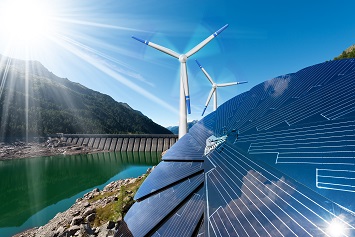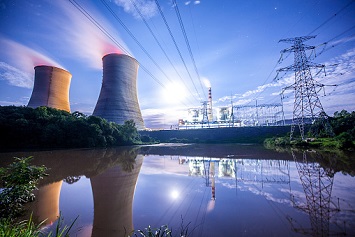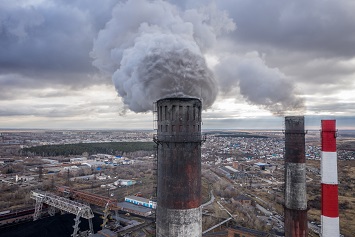One of the biggest differences in the 2020 presidential candidates is their plan to address climate change. Former Vice President Joe Biden’s energy and climate change plan is extensive. President Donald Trump has not proposed a formal climate change plan.
Trump’s campaign website states that his second term agenda is “Fighting for You,” with a core priority being to “Continue Deregulatory Agenda for Energy Independence.”
In contrast, Biden’s plan has been characterized as “the most aggressive climate and energy platform the country has ever seen from a major political party candidate,” according to Dino Grandoni, who is an energy and environmental policy reporter at The Washington Post, as quoted in an NPR interview.
Taking a Closer Look at “The Biden Plan for a Clean Energy Revolution and Environmental Justice”
Biden has been quoted as stating the Green New Deal is an imperative framework to face climate challenges, with two basic truths at the core of his plan:
- “The United States urgently needs to embrace greater ambition on an epic scale to meet the scope of this challenge.”
- “Our environment and our economy are completely and totally connected.”
Biden’s plan calls for the United States to achieve net-zero emissions and a 100% clean energy economy by no later than 2050 and pledges to “make the largest investment in history in American innovation—including research and innovation to unlock and deploy new zero-carbon technologies for the future, create stable well-paying jobs across the U.S., and make zero-carbon technologies the most cost-effective and scalable way to meet our country’s energy needs.”
To meet that goal, he will invest $400 billion in clean energy research, innovations, and technology over the next 10 years if elected.
“That’s twice the investment of the Apollo program which put a man on the moon, in today’s dollars,” according to Biden’s campaign website. “This investment will enable us to develop new technological break-throughs that will create jobs and drastically reduce emissions.”
Major CEOs, including several in the oil and gas industry, are in favor of carbon price tags to encourage innovation.
According to Biden, more than 3 million people in the United States are already employed by the clean energy industry, and executing a strategic response to climate change can create 10 million more well-paying U.S.-based jobs.
A department to lead this innovation would be established—a cross-agency Advanced Research Projects Agency (ARPA)—specifically focused on the following as recommended by the potential founding director of the new agency:
- “Grid-scale storage at one-tenth the cost of lithium-ion batteries”;
- “Small modular nuclear reactors at half the construction cost of today’s reactors”;
- “Refrigeration and air conditioning using refrigerants with no global warming potential”;
- “Zero net energy buildings at zero net cost”;
- “Using renewables to produce carbon-free hydrogen at the same cost as that from shale gas”;
- “Decarbonizing industrial heat needed to make steel, concrete, and chemicals and reimagining carbon-neutral construction materials”;
- “decarbonizing the food and agriculture sector, and leveraging agriculture to remove carbon dioxide from the air and store it in the ground”; and
- “Capturing carbon dioxide from power plant exhausts followed by sequestering it deep underground or using it to make alternative products.”
The plan calls for moving quickly toward developing and implementing technology for carbon capture, use, and storage (CCUS) by doubling down on federal investments and tax incentives for CCUS. Carbon capture research, development, and demonstration will continue to be funded.
Nuclear energy will be thoroughly researched to explore the issues, “ranging from cost to safety to waste disposal systems,” to identify the future of this industry.
Measures will be enacted to encourage other countries to meet their climate commitments. “Biden will not allow other nations, including China, to game the system by becoming destination economies for polluters, undermining our climate efforts and exploiting American workers and businesses,” according to the Biden campaign website. To that end, carbon tariffs, fees, or quotas will be imposed on countries that do not meet environmental and climate obligations. This also translates into the United States rejoining the Paris Agreement, a global response to address climate change.
A clean energy export and climate investment initiative will be created that will “offer incentives for U.S. firms that supply low-carbon solutions to the international market … prioritize partnerships with countries that make high climate ambition commitments … and provide low-cost financing to these countries for American clean energy exports,” according to the Biden website.
Strategies to develop low-carbon manufacturing technologies in every state will be enacted. “Industries from textiles to machine tools to metal fabrication to the most advanced manufacturing technologies will be eligible for funding to modernize, compete, create jobs, and move to clean energy futures,” according to the Biden website.
Corporate polluters will be held accountable with the EPA and the Justice Department, pursuing pollution cases to the fullest extent of the law, “including jail time where merited” for corporate executives.
Biden will fulfill what he considers America’s obligations to all workers impacted by the shift to clean energy. Benefits will be secured for coal miners, power plant workers, and their communities. He will ensure “the retirement benefits owed to miners, their dependents, and their widows” are protected. Additionally, he will “increase coal companies’ payments into the black lung benefits program, reform the black lung benefits system so it is no longer rigged in favor of coal companies who can hire lawyers and doctors to ensure miners’ benefits are denied, expand efforts to help miners detect black lung cases earlier and access care, and enforce regulations to reduce cases of black lung….”
Coal mining and power plant communities will be partnered with “to diversify their economies,” capitalize their strengths, and “build vibrant communities where good jobs are available and young people want to stay or return home,” according to the Biden website. To that end, a “Task Force on Coal and Power Plant Communities,” such as the one the Obama administration created for the auto industry, will be created to “help these communities access federal investments and leverage private sector investments to help create high-paying union jobs based upon the unique assets of each community, partner with unions and community colleges to create training opportunities for these new jobs, repair infrastructure, keep public employees like firefighters and teachers on the payroll, and keep local hospitals open,” according to the Biden website.
Funding Biden’s Dream
“The Biden plan will be paid for by reversing the excesses of the Trump tax cuts for corporations, reducing incentives for tax havens, evasion, and outsourcing, ensuring corporations pay their fair share, closing other loopholes in our tax code that reward wealth not work, and ending subsidies for fossil fuels,” according to Biden’s detailed climate plan website.
Transitioning away from fossil fuels is necessary to move into clean energy, according to Vox Media.
For the oil and gas industry, that means moving into geothermal technology and other innovations.
Fossil fuel energy will be necessary to bridge the gap until these transitions can be made. And some fossil fuels may survive the transition “to fill in the gaps in large electricity systems, attached to carbon capture and storage systems, or for some industrial applications or plastics,” according to Vox.
“Biden’s plan to phase out fossil fuels is nothing new,” according to The Hill. “The evidence is overwhelming: America’s already moving away from fossil fuels. Since the beginning of the year, the number of operating oil and gas rigs has dropped from nearly 800 to just 250. The number of people employed in oil and gas extraction has dropped from over 200,000 in 2014 to around 155,000 today.
“The fact is, the oil industry is on its way out, and even many industry leaders admit it,” according to The Hill. “It’s no longer a question of whether, but of when it will disappear. Five of the six largest U.S. banks have pledged to stop funding new drilling in Alaska. And even the giant oil company BP has embraced the goal of ending fossil fuel-produced energy by 2050.” (Learn more about BP’s transition plan.)



